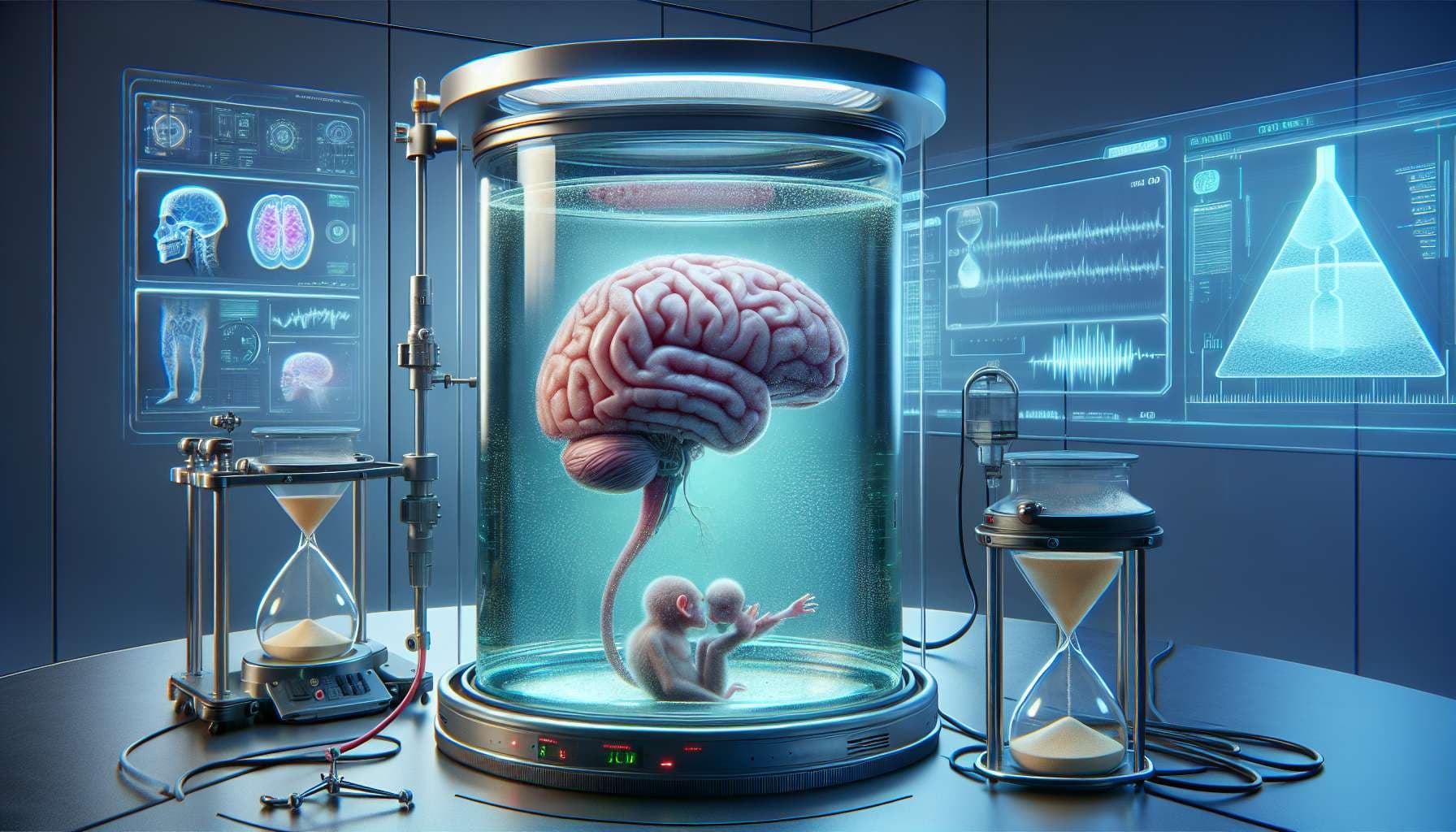
Reversible brain preservation involves a state where a brain's biological processes are dramatically slowed or halted, with the preserved brain maintaining its survival capacity, cognitive functions, and long-term memories for an extended period. This differs significantly from current cryonics or other structural brain preservation methods, for which the prospect of eventual reversibility relies on future advances in technology.
Potential methods for reversible brain preservation include protocols for vitrification via cryopreservation. The key is to prevent damage (e.g., from ice formation or cryoprotective agent toxicity) while ensuring that the brain can be reanimated with long-term memories and personality traits intact. I specify long-term memories because at least some degree of short-term memory loss is expected.
A key difference of this question from the question of long-term suspended animation is that that question requires the whole body to be reversibly preserved, whereas this question only requires the brain. This makes the preservation problem much easier because only one organ needs to be preserved (albeit one with two substantially different tissue types, i.e. the white and grey matter).
However, this then brings up the issue of how the reanimated brain would be reconnected to the rest of a body. There is some work ongoing into the problem of brain transplant. Although it is currently limited, it does not seem physically impossible. Importantly, the brain transplant procedure does not need to have been performed yet for this question to resolve YES. Instead, there are three ways that this question could resolve YES:
1: Reversible preservation of the isolated brain and transplant into the rest of a body, all performed in a primate, with survival and long-term memories and personality demonstrated to be retained. For example, they need to be able to recall a range of information that they were trained on prior to the preservation procedure, and observers should find them to have similar personalities before and after.
2: Reversible preservation of the isolated brain in a primate alongside functional testing. Then, reversible preservation of the isolated brain in another mammalian species followed by brain transplant, with survival and long-term memories and personality demonstrated to be retained. Then, demonstration that the same level of functional preservation achieved in the primate brain is sufficient for cognitive functions to be intact following transplant when it is tested in the other mammalian species.
3: Reversible preservation of the isolated brain in a primate alongside functional testing. Then, demonstration that the level of functional testing achieved is sufficient for long-term memories and personality to be intact, if a brain transplant procedure were to be performed. This level of knowledge about what functional tests in isolated brains correspond to cognitive functions would have to be shown in a series of other experiments and reach a rough level of consensus in the neuroscience field. Currently, there is clearly no such consensus.
If none of these potential resolution criteria have been met by 2061, then the question will resolve as "2061 or beyond or never". Additional criteria:
Publication requirement: This technology must demonstrated be through a scientific research publication prior to 2060, describing successful and reliable reanimation in at multiple primate brains (including humans). The publication requires peer review, either pre-publication or post-publication by at least one scientist who has reviewed the publication in-depth. (This could be me, as long as I am not involved in the research myself.) In addition, all research in this publication will need to be performed according to contemporary ethical standards.
Criteria for storage length: The preservation must be capable of lasting at least 50 years. However, it does not actually need to be shown to work for that long for this question to resolve YES. Instead, a biophysical argument could be made that the amount of time will be achievable. For example, via storage at temperatures below glass transition, or via evidence that vitrification has occurred, with minimal physical aging or other potential storage complications expected.
Applicability: The procedure does not need to be universally applicable to all primates and may involve preparatory genetic engineering or other pre-conditioning steps. If so, such prerequisites must be practically applicable to humans and this needs to be a part of the demonstrated protocol.
Reliability standards: To be considered reliable, the reversible preservation procedure must demonstrate a success rate -- or an expected success rate, based on available primate data and extrapolations from other animal experiments -- of at least 95% upon reanimation. The animals need to retain their fundamental cognitive abilities, long-term memories, and personality traits. Other side effects -- for example, requiring medication upon reanimation -- are permissible as long as they do not result in significant cognitive impairment or personality changes or prevent long-term functioning.
People are also trading
This technology must demonstrated be through a scientific research publication prior to 2060, describing successful and reliable reanimation in at multiple primate brains (including humans)
Yeah the human part is a deal breaker. I could see them possibly doing this with monkeys or even apes but doing this on humans is a whole big can of worms that scientists almost certainly wouldn't risk.
@Chumchulum well besides humans of course, I'd think Rhesus or Crab-Eating Macaques as they are often used for experimental purposes when they want something close to humans but without risking human or chimp (chimp testing is being phased out) lives.